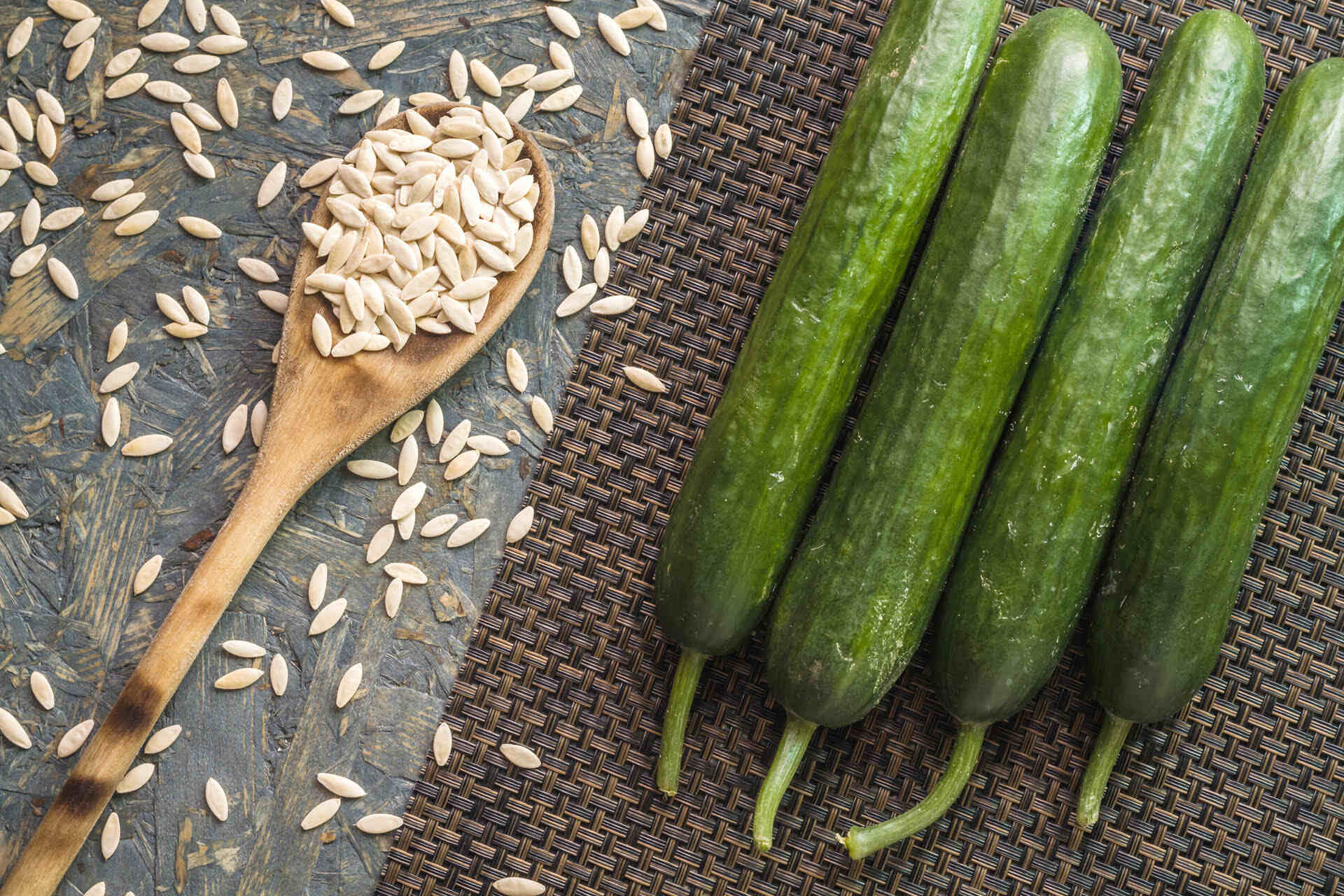

Articles
How To Store Cucumber Seeds
Modified: February 25, 2024
Learn how to store cucumber seeds properly for future planting with these helpful articles.
(Many of the links in this article redirect to a specific reviewed product. Your purchase of these products through affiliate links helps to generate commission for Storables.com, at no extra cost. Learn more)
Introduction
When it comes to cultivating your own fruits and vegetables, nothing beats the satisfaction of growing them from seeds you’ve saved yourself. Not only does it save you money, but it also allows you to perpetuate heirloom varieties and maintain a self-sustaining garden. One such vegetable that is popular among home gardeners is the cucumber. Known for its refreshing taste and versatility, cucumbers are a staple in many dishes and salads.
In this article, we will explore the art of storing cucumber seeds. Whether you want to store seeds for future planting or exchange them with other gardeners, understanding the process will ensure the longevity and viability of your cucumber seeds.
So why should you bother storing cucumber seeds in the first place? Well, there are several reasons why it’s a good idea:
Read more: How To Seed A Cucumber
Preserve heirloom varieties
If you have a particular variety of cucumber that you absolutely love, storing its seeds allows you to continue growing that specific variety year after year. It’s a way to preserve heirloom varieties that may not be readily available in commercial seed catalogs.
Cost-effective
Buying seeds every season can quickly add up. By saving and storing your cucumber seeds, you can save money in the long run, making your gardening endeavors more cost-effective.
Self-sufficiency
By storing cucumber seeds, you become self-sufficient in terms of seed supply. You won’t have to rely on purchasing seeds from external sources, especially during times when they may be difficult to obtain.
Sharing and trading
Storing cucumber seeds also allows you to share or trade them with fellow gardeners. This not only fosters a sense of community but also provides an opportunity to discover new cucumber varieties and broaden your gardening horizons.
Now that we’ve discussed the benefits, let’s explore how to properly store cucumber seeds, step by step.
Key Takeaways:
- Storing cucumber seeds allows you to preserve heirloom varieties, save money, and foster self-sufficiency in gardening. It also opens up opportunities for sharing and exchanging seeds with fellow gardeners, creating a sense of community and expanding your gardening horizons.
- Properly harvesting, cleaning, and storing cucumber seeds is essential for maintaining their viability. By following these steps, you can ensure a continuous supply of homegrown cucumbers and contribute to the diversity and sustainability of your garden.
Read more: How To Dry Cucumber Seeds
Why Store Cucumber Seeds?
Storing cucumber seeds offers numerous advantages for both practical and personal reasons. Let’s delve into some of the key reasons why you should consider storing cucumber seeds:
Preserving Genetic Diversity
By storing cucumber seeds, you have the ability to preserve and maintain the genetic diversity of different cucumber varieties. Commercial seed companies often focus on popular, high-yielding varieties, neglecting many unique and heirloom cucumbers. By storing seeds, you play an essential role in conserving and celebrating the diverse range of cucumber cultivars.
Cost Savings
One of the primary reasons to store cucumber seeds is to save money on purchasing new seeds each year. Cucumber seeds are relatively inexpensive, but over time, the costs can accumulate, especially if you’re looking to grow multiple varieties. By storing your own cucumber seeds, you can eliminate the need to regularly buy seeds and instead allocate that budget to other gardening needs.
Self-Sufficiency and Sustainability
Storing cucumber seeds promotes self-sufficiency in gardening, providing you with a reliable supply of seeds for future plantings. This aspect is particularly important if you’re passionate about growing your own food or if you live in an area where access to quality seeds may be limited or restricted. Moreover, by reducing reliance on external sources for seeds, you contribute to a more sustainable and resilient gardening practice.
Read more: How To Plant A Cucumber Seed
Preserve and Share Unique Varieties
Storing cucumber seeds allows you to preserve and share unique varieties that might not be readily available in commercial seed catalogs. You may come across a cucumber cultivar that has exceptional flavor or specific traits suited to your local climate. By storing the seeds, you ensure that these cherished varieties can be grown and shared for generations to come.
Experimentation and Adaptation
When you store cucumber seeds, you have the freedom to experiment with different growing techniques and adapt the plants to your specific gardening conditions. You can select and save seeds from cucumbers that performed exceptionally well in your garden, developing strains that are better adapted to your local environment over time. This hands-on approach allows you to create a unique cucumber variety that perfectly suits your personal gardening goals.
By now, you should have a deeper understanding of why storing cucumber seeds is beneficial. In the following sections, we’ll explore the process of harvesting, cleaning, and storing cucumber seeds to ensure their longevity and viability for future plantings.
Harvesting Cucumber Seeds
Harvesting cucumber seeds requires some patience and attention to detail. It’s important to select fully mature and healthy cucumbers for seed saving. Here are the steps to follow when harvesting cucumber seeds:
1. Selecting the Right Cucumbers
Choose cucumbers that have fully ripened on the vine. Look for cucumbers with a firm and thick skin, indicating that the seeds inside have reached maturity. Avoid cucumbers that are small or have a soft, spongy texture, as they may not produce viable seeds.
Read more: How To Preserve Cucumber Seeds
2. Allowing Cucumbers to Overripen
After selecting the cucumbers, let them remain on the vine for an additional 2-3 weeks past their typical harvest time. This extended ripening period allows the cucumbers to become overripe, ensuring that the seeds inside are fully developed.
3. Cutting Open the Cucumbers
Once the cucumbers have reached the desired ripeness, carefully cut them open lengthwise. Use a clean knife and avoid damaging the seeds inside. You should notice a gel-like substance surrounding the seeds.
4. Extracting the Seeds
Using a spoon or your fingers, gently scrape the seeds out of the cucumber. Try to separate the seeds from the surrounding gel as much as possible. Place the seeds and gel mixture into a clean container.
5. Fermenting the Seeds
Fermentation is an essential step in cleaning cucumber seeds and removing any potential pathogens. To ferment the seeds, add some water to the container, covering the seeds and gel mixture. Stir the mixture well, then cover it loosely with a cloth or plastic wrap. Place the container in a warm, undisturbed location for about 3-5 days.
Read more: How Many Seeds In A Cucumber
6. Separating the Seeds
After the fermentation period, you will notice a frothy layer on top of the water. This layer contains any debris and non-viable seeds. Gently pour off this layer, being careful not to lose the viable seeds settled at the bottom of the container. Rinse the seeds with clean water, removing any remaining gel or debris.
7. Drying the Seeds
Spread the rinsed seeds onto a non-stick surface, such as a clean plate or a drying screen. Allow the seeds to air dry completely in a well-ventilated area. This process may take anywhere from a few days to a couple of weeks, depending on the humidity levels in your location.
Now that you’ve harvested the cucumber seeds, it’s time to clean and dry them before storing. In the next section, we’ll explore the proper cleaning and drying techniques to ensure the longevity and viability of your cucumber seeds.
Cleaning and Drying Cucumber Seeds
Properly cleaning and drying cucumber seeds is crucial for their long-term storage and viability. Here are the steps to follow:
1. Removing Debris
After harvesting the cucumber seeds, it’s important to remove any remaining debris or hulls. You can do this by gently rubbing the seeds between your fingers or using a fine-mesh sieve. This step helps ensure that only clean, viable seeds are stored.
Read more: How Long For Cucumbers To Germinate
2. Water Float Test
To further ensure seed quality, you can perform a water float test. Fill a bowl with water and place the cucumber seeds in it. Viable seeds will sink to the bottom, while any non-viable or empty seeds will float to the top. Remove the floating seeds and discard them, keeping only the ones that sink.
3. Drying the Seeds
After cleaning, it’s crucial to thoroughly dry the cucumber seeds before storing them. Spread the seeds out on a clean, dry surface, such as a paper towel or a fine-mesh screen. Make sure the seeds are in a single layer to allow proper airflow.
4. Air Drying
Place the seeds in a well-ventilated area away from direct sunlight. The drying process can take anywhere from 1 to 2 weeks, depending on the humidity levels in your location. During this time, periodically check the seeds for any signs of moisture or mold. If necessary, gently stir the seeds to ensure even drying.
5. Seed Cracking Test
Before storing the cucumber seeds, you can perform a seed cracking test to check their moisture content. Simply take a few dried seeds and try to crack them with your fingers. If they snap or break easily, they are sufficiently dry for storage. If they bend without breaking, they need more drying time.
Read more: When To Harvest Cucumber Seeds
6. Long-Term Storage Containers
Once the cucumber seeds are thoroughly dry, transfer them to airtight containers for long-term storage. Good options include glass jars, envelopes, or seed storage packets. Make sure to label each container with the seed variety and the date of harvest.
7. Storage Conditions
The ideal conditions for storing cucumber seeds are cool, dark, and dry. Aim for a temperature of around 40-50°F (4-10°C) and a humidity level below 50%. Store the seed containers in a cool basement, refrigerator, or a dry pantry away from any direct sunlight or moisture sources.
By following these steps, you can ensure that your cucumber seeds are clean, dry, and stored under optimal conditions. In the next section, we will explore how to use stored cucumber seeds for future plantings.
Storing Cucumber Seeds Properly
Proper storage is essential for maintaining the viability of cucumber seeds over an extended period. Follow these guidelines to ensure the longevity of your stored cucumber seeds:
1. Clean and Dry Seeds
Before storing cucumber seeds, make sure they are thoroughly cleaned and dried. Any debris or moisture can lead to mold or rot during storage, reducing the seed’s viability. Refer to the previous section on cleaning and drying cucumber seeds for detailed instructions.
Read more: How To Store Cucumber
2. Label and Organize
It is crucial to label each storage container with the cucumber variety and the date of harvest. This information will help you keep track of the seed’s age and ensure that older seeds are used before newer ones. Organize the containers in a way that allows easy retrieval and access to specific cucumber varieties.
3. Choose the Right Containers
Airtight containers, such as glass jars, envelopes, or seed storage packets, are ideal for storing cucumber seeds. These containers help protect the seeds from moisture, pests, and fluctuations in temperature. Make sure the containers are clean and dry before transferring the seeds.
4. Store in Cool and Dry Location
Find a cool, dark, and dry location for storing cucumber seeds. The ideal temperature for seed storage is around 40-50°F (4-10°C). Avoid exposing the seeds to sunlight, as it can prematurely activate growth processes. Basements, refrigerators, or dry pantry shelves are excellent options for long-term seed storage.
5. Check for Viability
Periodically check the viability of stored cucumber seeds. After a year or two, you can perform a germination test by placing a small number of seeds on a moist paper towel or potting mix. If a significant percentage of the seeds fail to germinate, it may be time to replenish your seed stock.
Read more: How To Store A Cucumber
6. Rotate and Use Seeds
To maintain healthy and diverse cucumber plants, it’s essential to rotate and use your stored cucumber seeds regularly. Avoid storing seeds for too long, as their viability can decrease over time. Aim to use the oldest seeds first and replenish your stash by saving fresh seeds from each growing season.
By following these guidelines, you can ensure that your stored cucumber seeds remain viable and ready for future plantings. In the next section, we’ll explore how to make the most of your stored cucumber seeds.
Using Stored Cucumber Seeds
Stored cucumber seeds provide you with a valuable resource for future plantings. Here are some tips for using your stored cucumber seeds effectively:
1. Check Seed Viability
Before planting stored cucumber seeds, it’s essential to check their viability. Performing a germination test will help determine the percentage of seeds that are likely to sprout. Place a few seeds on a moist paper towel or potting mix and provide the appropriate conditions for germination. After a week or so, assess the germination rate to ensure the seeds are still viable. Discard any seeds that do not germinate.
2. Plan Your Plantings
Take time to plan your cucumber plantings based on the number of viable seeds you have. Consider factors such as available space, desired harvest quantities, and specific cucumber varieties you wish to grow. Proper planning will help you allocate your stored seeds efficiently and maximize harvest outcomes.
Read more: When To Start Cucumber Seeds
3. Start Seeds Indoors
For regions with shorter growing seasons or unpredictable weather, starting cucumber seeds indoors can provide a head start. Use seed-starting trays or pots filled with a good-quality potting mix. Plant the cucumber seeds at the recommended depth and keep them in a warm, well-lit area until they sprout. Once the danger of frost has passed, transplant the seedlings into your garden or containers.
4. Direct Sowing
If you have a longer growing season or prefer to sow seeds directly in the garden, you can do so with stored cucumber seeds. Wait until the soil has warmed up and there is no risk of frost before sowing. Follow the recommended seed spacing and plant the seeds at the appropriate depth. Provide adequate water and ongoing care as the plants grow.
5. Monitor and Maintain
Once your cucumber plants have sprouted, it’s crucial to monitor their growth and provide proper care. Regularly check for pests, diseases, and nutrient deficiencies. Water the plants consistently, ensuring the soil remains evenly moist. Consider using organic fertilizers or compost to provide additional nutrients throughout the growing season.
6. Save Seeds for Future Plantings
As your stored cucumber plants mature and produce fruit, select a few ideal cucumbers for seed saving. Allow these chosen cucumbers to fully ripen on the vine and collect the seeds following the harvesting and cleaning processes mentioned earlier. By saving seeds from your homegrown cucumbers, you can continue the cycle of seed saving and ensure a constant supply of fresh, viable cucumber seeds for future plantings.
By using your stored cucumber seeds wisely, you can enjoy a continuous supply of homegrown cucumbers and maintain the genetic diversity of different cucumber varieties. In the concluding section, we’ll recap the importance of storing cucumber seeds and the benefits they bring to your gardening journey.
Read more: How To Store Cucumbers For The Winter
Conclusion
Storing cucumber seeds is a rewarding practice for any avid gardener. By preserving and utilizing your own cucumber seeds, you not only save money but also contribute to the diversity and sustainability of your garden. Let’s recap the key points we’ve covered in this article:
We discussed the reasons why you should store cucumber seeds, including preserving heirloom varieties, cost savings, self-sufficiency, and the opportunity to share and exchange seeds with fellow gardeners.
We explored the process of harvesting cucumber seeds, emphasizing the importance of selecting ripe cucumbers and allowing them to overripen before cutting them open to extract the seeds. We also discussed the fermentation step and the need for proper drying before storage.
Cleaning and drying cucumber seeds were highlighted as crucial steps to ensure their longevity and viability. We discussed techniques such as removing debris, performing a water float test, and air drying the seeds until they are fully dry and ready for storage.
In the section on storing cucumber seeds properly, we emphasized the importance of using airtight containers, labeling and organizing the seeds, and choosing appropriate storage conditions – cool, dark, and dry locations away from sunlight and fluctuations in temperature.
We also explored the practical aspects of using stored cucumber seeds, including conducting viability tests, planning your plantings, starting seeds indoors or direct sowing, monitoring plant growth, and saving seeds from mature cucumbers for future use.
In conclusion, storing cucumber seeds is not only a sustainable and cost-effective practice but also a way to maintain the unique and diverse range of cucumber varieties. By following the proper harvesting, cleaning, and storage techniques outlined in this article, you can enjoy the benefits of a self-sufficient garden and contribute to the preservation of heirloom cucumber varieties. So go ahead, start storing your cucumber seeds and embark on an exciting journey of seed saving and cultivation!
Frequently Asked Questions about How To Store Cucumber Seeds
Was this page helpful?
At Storables.com, we guarantee accurate and reliable information. Our content, validated by Expert Board Contributors, is crafted following stringent Editorial Policies. We're committed to providing you with well-researched, expert-backed insights for all your informational needs.
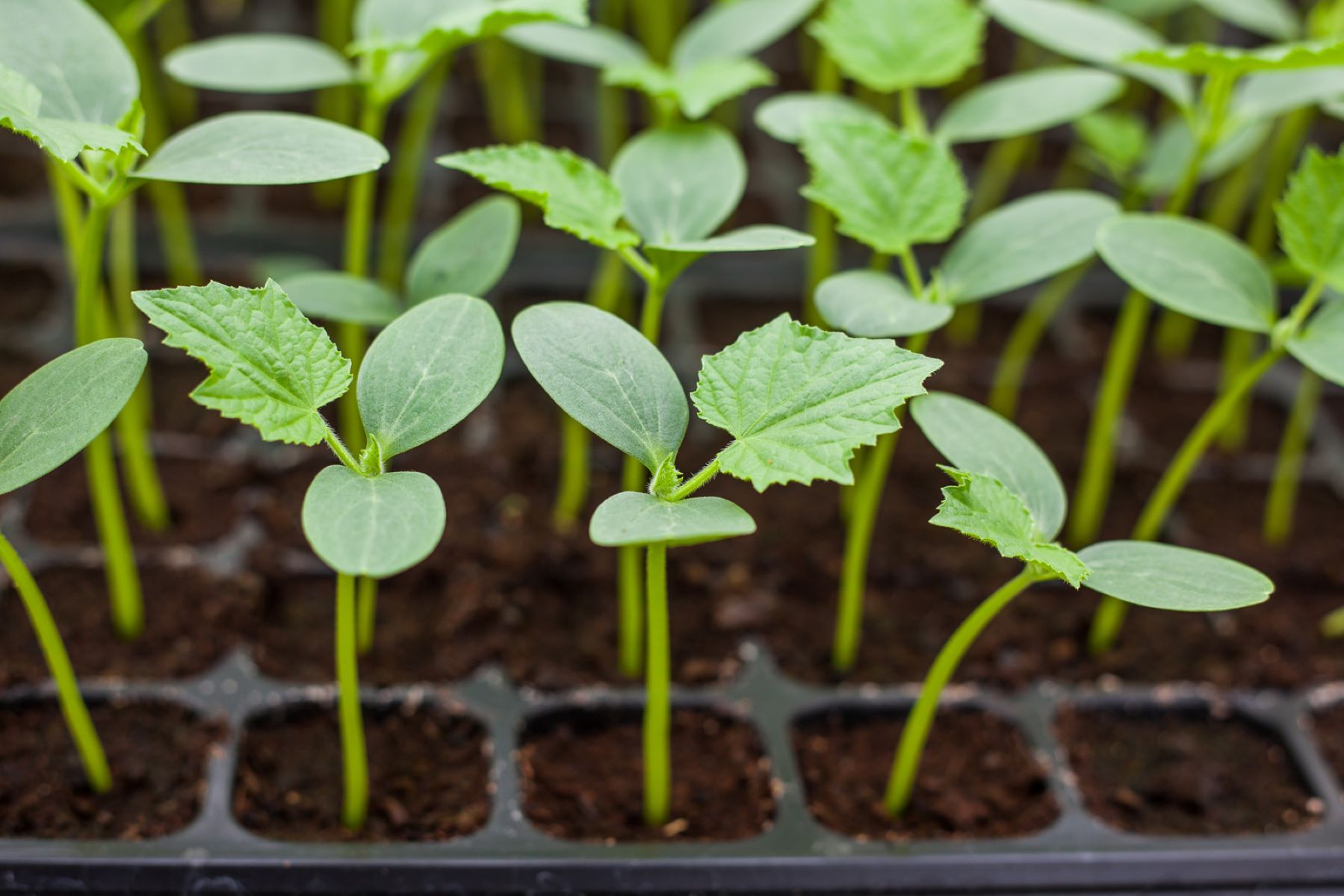
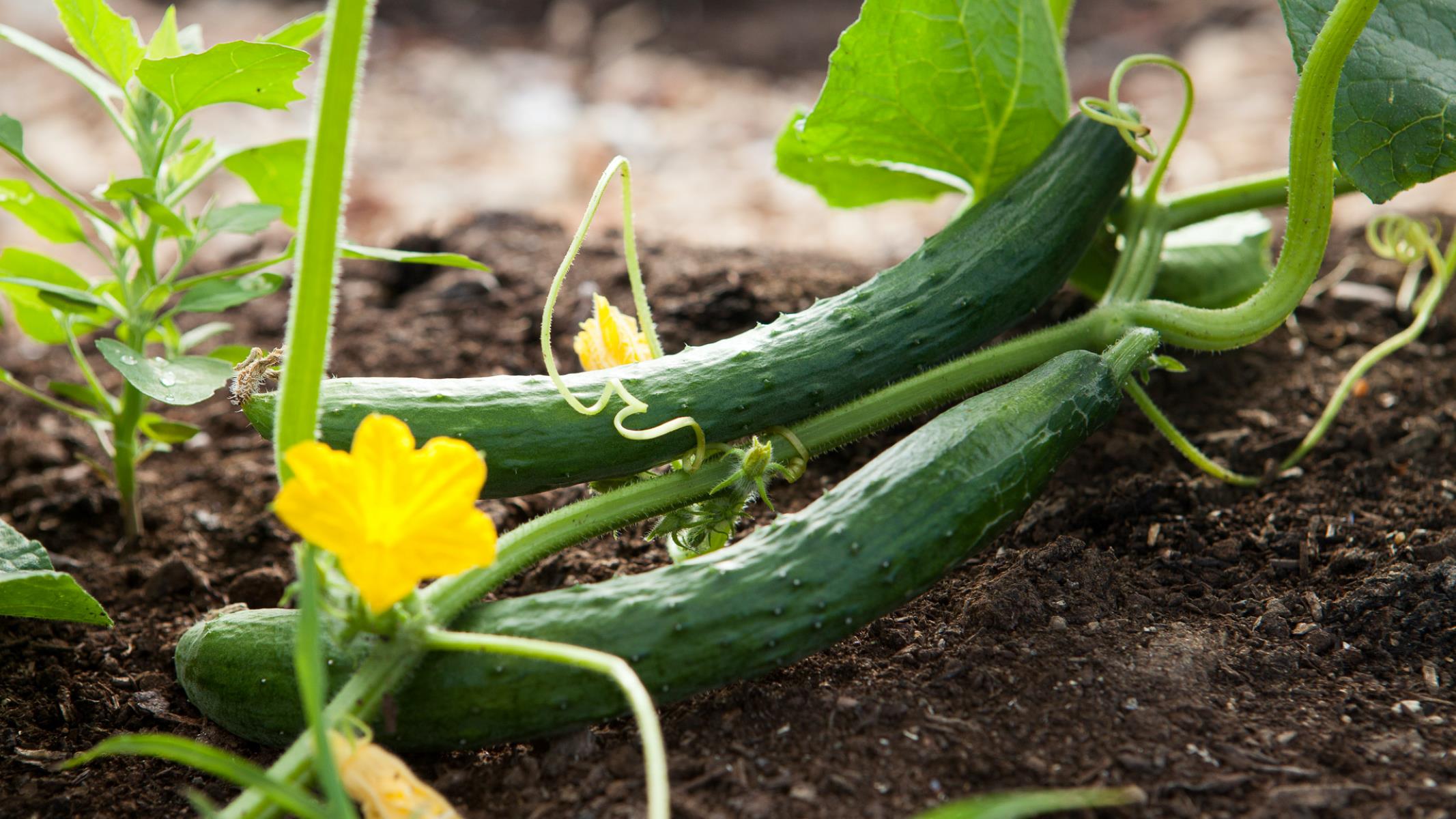
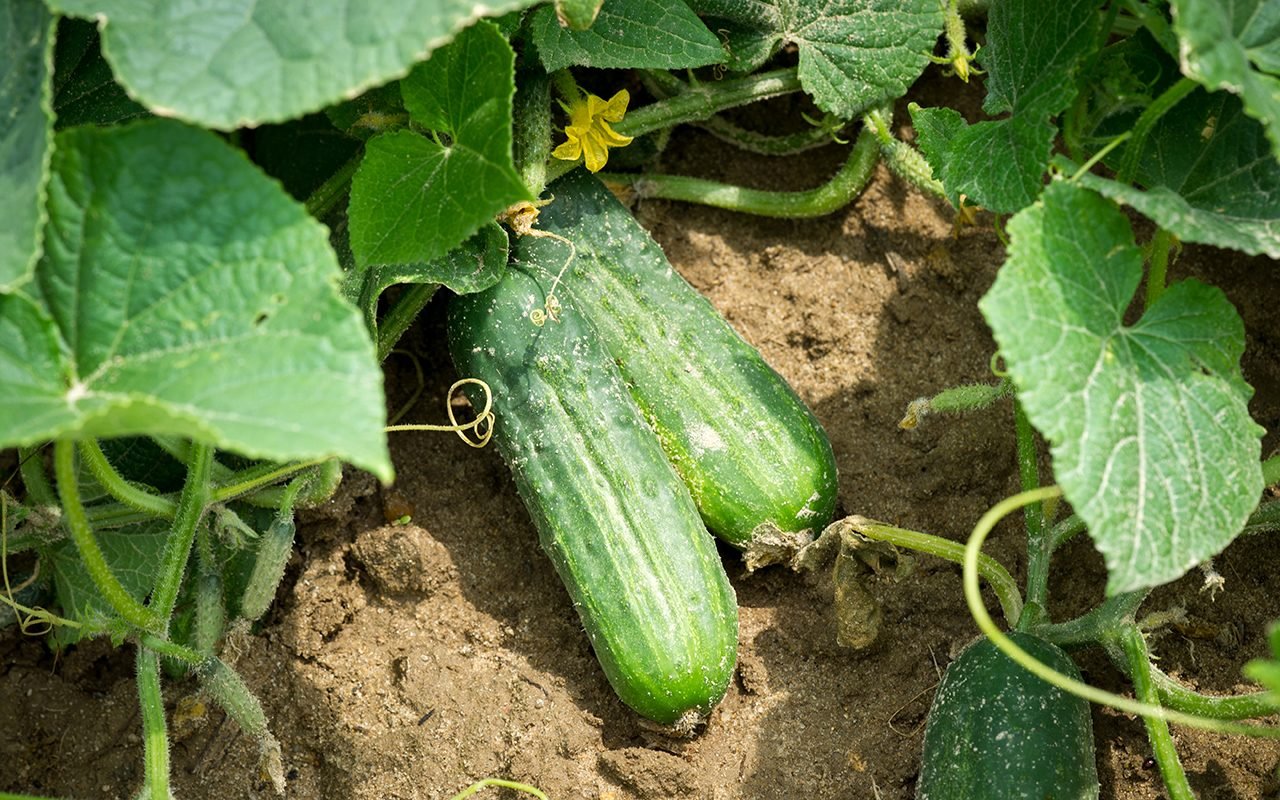
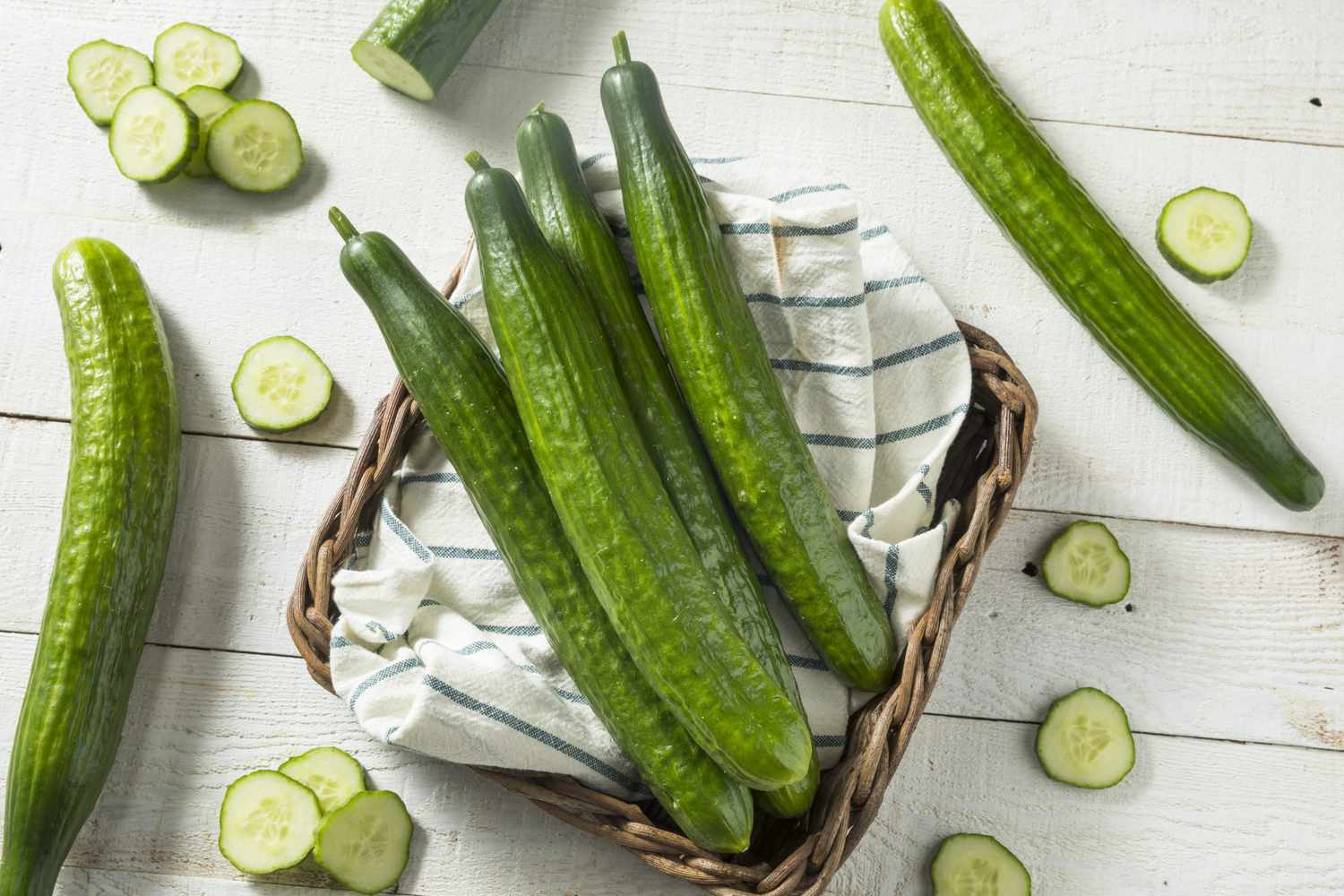


0 thoughts on “How To Store Cucumber Seeds”